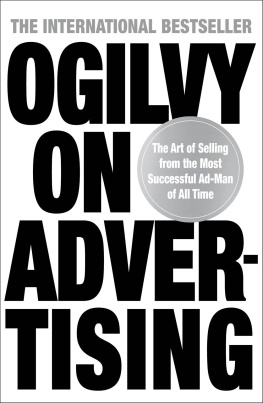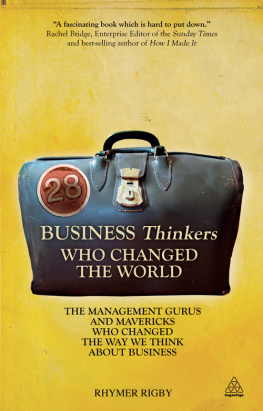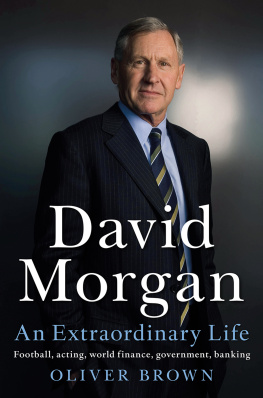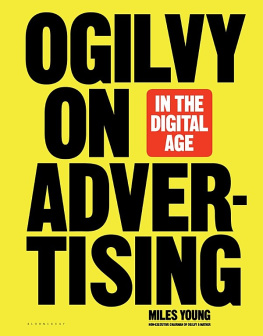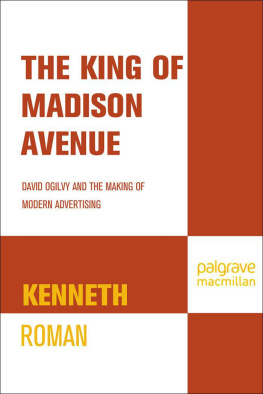The Unpublished David Ogilvy
The Unpublished David Ogilvy
David Ogilvy
Edited by Joel Raphaelson


This edition published in 2012 by
PROFILE BOOKS LTD
3A Exmouth House
Pine Street
Exmouth Market
London EC1R 0JH
www.profilebooks.com
First published in the United States of America in 1987 by
Crown Publishers, Inc.
First published in Great Britain in 1988 by Sidgwick & Jackson Ltd
Copyright The Ogilvy Group, 1986, 2012
10 9 8 7 6 5 4 3 2 1
Typeset in Baskerville by MacGuru Ltd
info@macguru.org.uk
Printed and bound in Great Britain by
Clays, Bungay, Suffolk
The moral right of the authors has been asserted.
All rights reserved. Without limiting the rights under copyright reserved above, no part of this publication may be reproduced, stored or introduced into a retrieval system, or transmitted, in any form or by any means (electronic, mechanical, photocopying, recording or otherwise), without the prior written permission of both the copyright owner and the publisher of this book.
A CIP catalogue record for this book is available from the British Library.
ISBN 978 1 78125 087 7
eISBN 978 1 84765 945 3
The paper this book is printed on is certified by the 1996 Forest Stewardship Council A.C. (FSC). It is ancient-forest friendly. The printer holds FSC chain of custody SGS-COC-2061

Foreword
They published The Unpublished David Ogilvy on Davids seventy-fifth birthday in 1986, and gave it to him at a boat party in London. (At the time I was slaving as a Junior Account Director in our offices at Brettenham House by Waterloo Bridge and blithely ignorant of the doings of the Great and the Good Salon on the river below).
Ken Roman was Ogilvy & Mathers CEO at the time and it was his idea to begin with. Then it was Bill Phillips, another CEO, who enabled it. Bill wrote the original Foreword and I am honored to follow on over twenty-five years later. Bill wrote at the time that, when David received his copy, for once, words failed him.
Otherwise, words were what made him. Reading this collection, one is struck, piece after piece, whether in the most apparently (but perhaps not so) casual of memoranda or the most public of pronouncements, by how Davids words surprise and seduce, tease and provoke.
To me, his writing is in the best tradition of Dr. Johnson opinionated, forceful, and urgent, whether it addresses the higher principles of management or the dangers of the lowly paper clip. Above all, though, one can see in it the recurring theme of his love for people, which is an abiding legacy for us in Ogilvy & Mather and an essential part of the extraordinary culture which he crafted and which endures so strongly.

David and Herta Ogilvy at Touffou, their home in France, in June 1986.
When Ken and Bill decided to make this book, they turned to Joel Raphaelson, one of Davids paladins. I asked Joel how he went about it and this is what he told me.
I canvassed the Ogilvy world, asking for anything David had written, handwritten or typed, long or short, important and thoughtful or spontaneous and frivolous. Responses by the dozen came pouring into my office in Chicago. When Id accumulated a big stack I went through it, item by item, hoping to find things piling up naturally into a few well-defined categories. And they did. For example, I saw to my surprise that Id made a pile of memos made up entirely of lists.
But perhaps Joels most important contribution was getting the money to pay for Davids court typographer, Ingeborg Baton, to leave retirement, and her native Denmark, in order to design the typography. In Joels words, that made sure the result would be something that would please David to look at. The relaxed good looks of the book are thanks to her.
Relaxed though this book may be, it will also stimulate the most jaded brain in todays world of business, different in so many degrees but not in fundamental kind to the years when David was building his first-class business in a first-class way.
It very well deserves this re-publishing.
Miles Young
Worldwide Chairman and CEO, Ogilvy & Mather
September 2012

In 1971, on the ranch in Argentina where his father was born.
Early Years

Early Years
In 1936, as a 25-year-old assistant account executive, David somehow was given the entire staff of his agency as an audience for his views on advertising. He came across his pronunciamento years later, when he was Chairman of Ogilvy & Mather, and sent the following excerpt to his Board, commenting that it proves two things: A) At 25 I was brilliantly clever; and B) I have learned nothing new in the subsequent 27 years.
Every advertisement must tell the whole sales story, because the public does not read advertisements in series.
The copy must be human and very simple, keyed right down to its market a market in which self-conscious artwork and fine language serve only to make buyers wary.
Every word in the copy must count. Concrete figures must be substituted for atmospheric claims; clichs must give way to facts, and empty exhortations to alluring offers.
Facetiousness in advertising is a device dear to the amateur but anathema to the advertising agent, who knows that permanent success has rarely been built on frivolity and that people do not buy from clowns.
Superlatives belong to the marketplace and have no place in a serious advertisement; they lead readers to discount the realism of every claim.
Apparent monotony of treatment must be tolerated, because only the manufacturer reads all his own advertisements.

From The Theory & Practice of Selling the Aga Cooker, a guide for his fellow door-to-door salesmen written in 1935 when David was twenty-four years old.
In an article about him in 1971, Fortune called it probably the best sales manual ever written.
Much of what it espoused for selling stoves door-to-door can be put to good use a half-century later for selling any kind of goods in any medium.
FOREWORD
In Great Britain, there are twelve million households. One million of these own motorcars. Only ten thousand own Aga Cookers. No household which can afford a motorcar can afford to be without an Aga
There are certain universal rules. Dress quietly and shave well. Do not wear a bowler hat. Go to the back door (most salesmen go to the front door, a manoeuvre always resented by maid and mistress alike) Tell the person who opens the door frankly and briefly what you have come for; it will get her on your side. Never on any account get in on false pretences.
Next page


